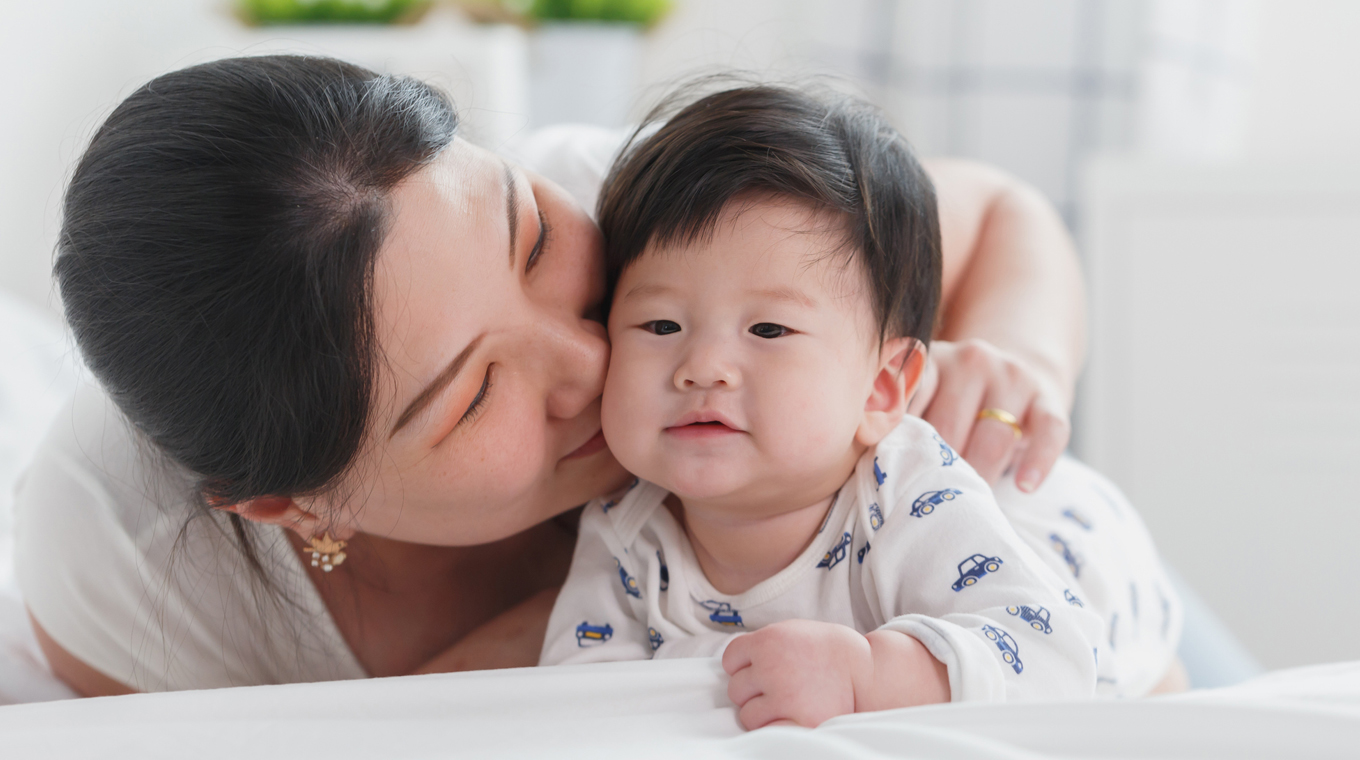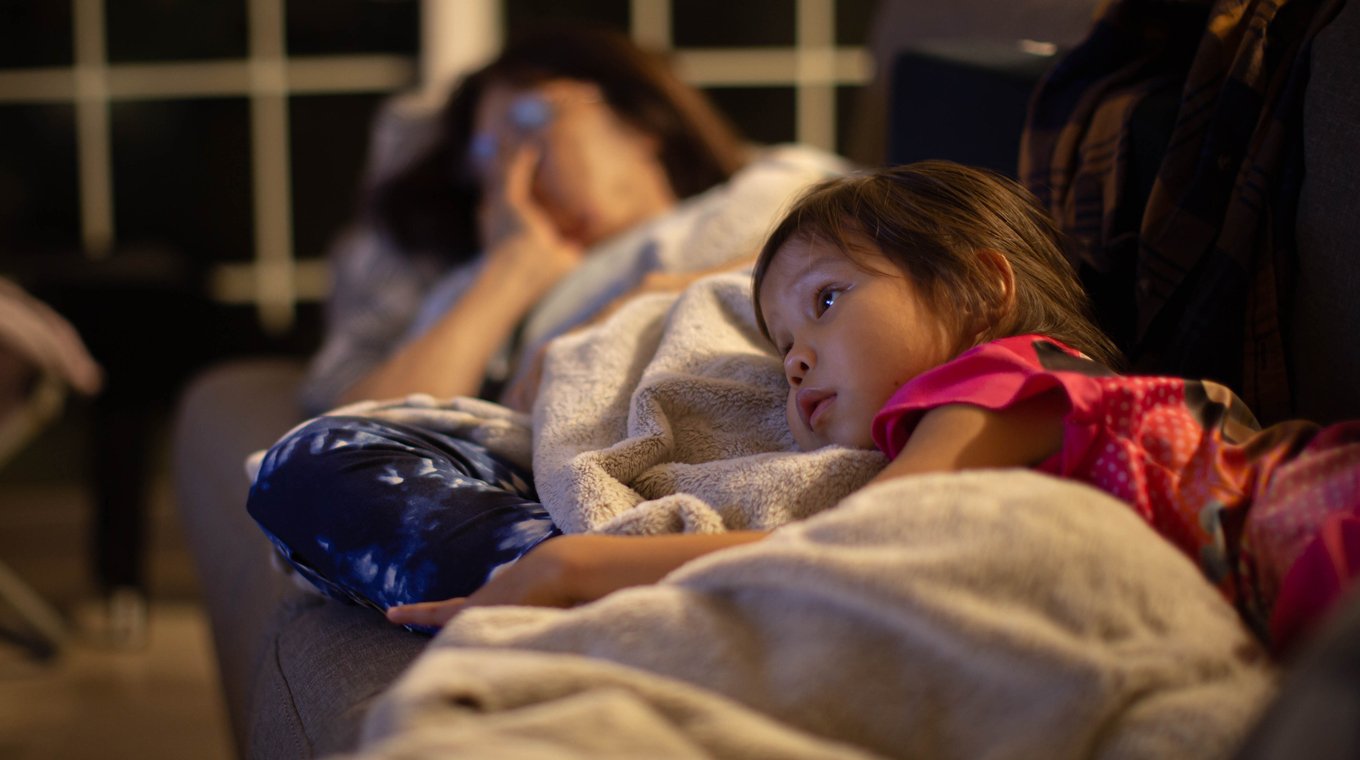
In This Article
Safely co-sleeping — or room-sharing as it is more accurately presented — involves having young children sleep in their own crib in the same room as their parents or in a co-sleeper bassinet attached to the parent's bed.
Bed-sharing – when babies and share a bed with one or both parents — is a subset of co-sleeping and has come under fire in the past due to the risk of risk of Sudden Infant Death Syndrome (SIDS) or suffocation. Thus co-sleeping has evolved into room-sharing with the understanding that it is unsafe for little ones to sleep in their parents' bed overnight.
But what about older children? Is co-sleeping with a toddler safe?
What are the benefits of co-sleeping?

Like most research, results can be swayed one way or the other, depending on what the study is trying to prove or disprove. The same holds true on the benefits of co-sleeping. If a psychologist is against co-sleeping, confirmation bias indicates that the information they cite will confirm their beliefs. If an educator in the gentle parenting space wants to impress upon parents co-sleeping safety and benefits, they will find evidence-based research to support their views.
A 2017 study out of Brazil found that "persistent bed-sharers" — children who have consistently co-slept with their parents since babyhood — were at increased odds of presenting psychiatric disorders and internalizing problems, compared with children who never co-slept. It's also interesting to note that in this particular study, bed-sharing is described as "habitual sharing of the bed between child and the mother."
Conversely, proponents of gentle parenting and attachment parenting cite research indicating that infants who co-sleep fall asleep faster and stay sleeping longer. Additionally, research from this camp indicates that parents who co-sleep with their children have reported getting better sleep overall. Those who lean toward gentle parenting or attachment parenting, encourage a partnership between child and parent vs. simply going along with what all of society deems the norm.
Research can be skewed so it's incredibly important for parents to choose what works best for their families. Intent is key and critical thinking must come into play. Recognize the intent behind each study. If the Brazilian study's intent was to discourage mothers from sleeping in the same bed as their children, then the results will reflect the negative side of co-sleeping. The bottom line remains, parents must use their best judgment to ensure they're safely co-sleeping, and adhering to co-sleeping safety guidelines.
"As with every decision you make as a parent, you need to think about your specific child’s need, which differs from kid to kid, your own mental health, and the specific situation and do what makes the most sense for that particular moment," Alanna Gallo of Play, Learn, Thrive told Mom.com.
At what age is co-sleeping safe?

We've all been there: the pouty 3-year-old comes shuffling into your bedroom at 2 a.m., lovey in tow, wanting to crawl into bed with you because they can't sleep. It's difficult to send them back to their own bed, so it's good to know that in general, while toddler co-sleeping can be considered safe, toddlers’ sleep cycles differ from that of their parents.
“For toddlers and young school-age children, the deepest sleep usually occurs early in the evening — before mom or dad’s bedtime — so, co-sleeping may be disruptive to both the parent and the child’s sleep,” noted Dr. Katherine Hoops, a pediatric critical care physician at Johns Hopkins Medicine.
"Our kids slept better, felt secure, and we bonded beautifully," homeschooling mom of eight Lisa Yvonne told Mom.com. "I was so attuned to my children, even in sleep, and they never cried during the night. Nursing was a sweet and seamless experience all night long. We woke up more rested because we both got to sleep more for it."
How do I put an end to toddler co-sleeping?

For parents looking to reclaim their bedrooms, a nighttime routine is key. “One of the most important things to start with, when you’re trying to put an end to co-sleeping, is a consistent sleep routine that starts in the child’s room,” noted Dr. Kupersmith. “Routines can include a few stories, songs, and a comfortable blanket and ‘lovey’ to cuddle.”
If co-sleeping has been going on for a long time, the child may need some additional help in falling asleep for the first few days or weeks. “Parents may need to lay on the floor for a few minutes, stand outside the door, or just check in every few minutes. The parent should do less and less each night, as the child has more success falling asleep on his or her own.”
Lisa shared this sentiment. "Eventually, when they were ready, they transitioned to their own beds. While they still occasionally come in for snuggles or comfort, they are also confident on their own."
If your toddler is having a hard time staying in their own bed overnight, Dr. Kupersmith recommends consistently bringing your child back to his or her room. Verbal praise and incentives also work well. “Just the action of placing the sticker on the chart can be enough of a reward for a child to continue sleeping in his or her bed each night, although some may enjoy working towards a goal, such as a movie night or a small toy,” he suggested.





